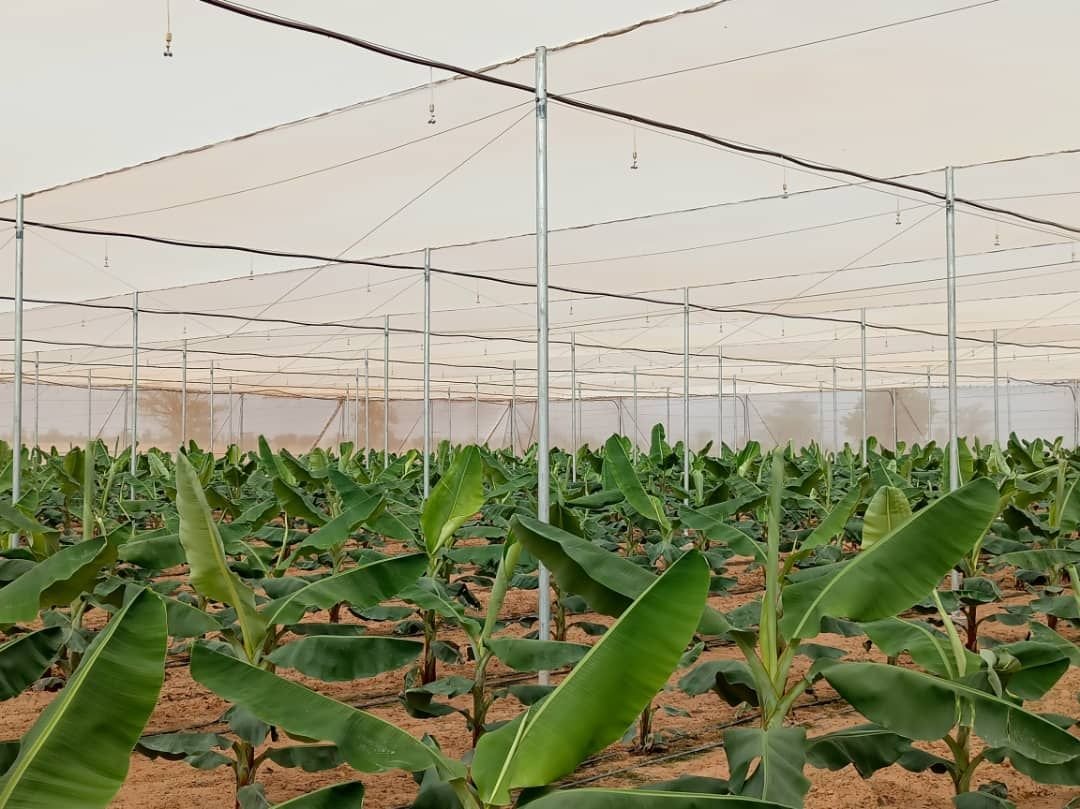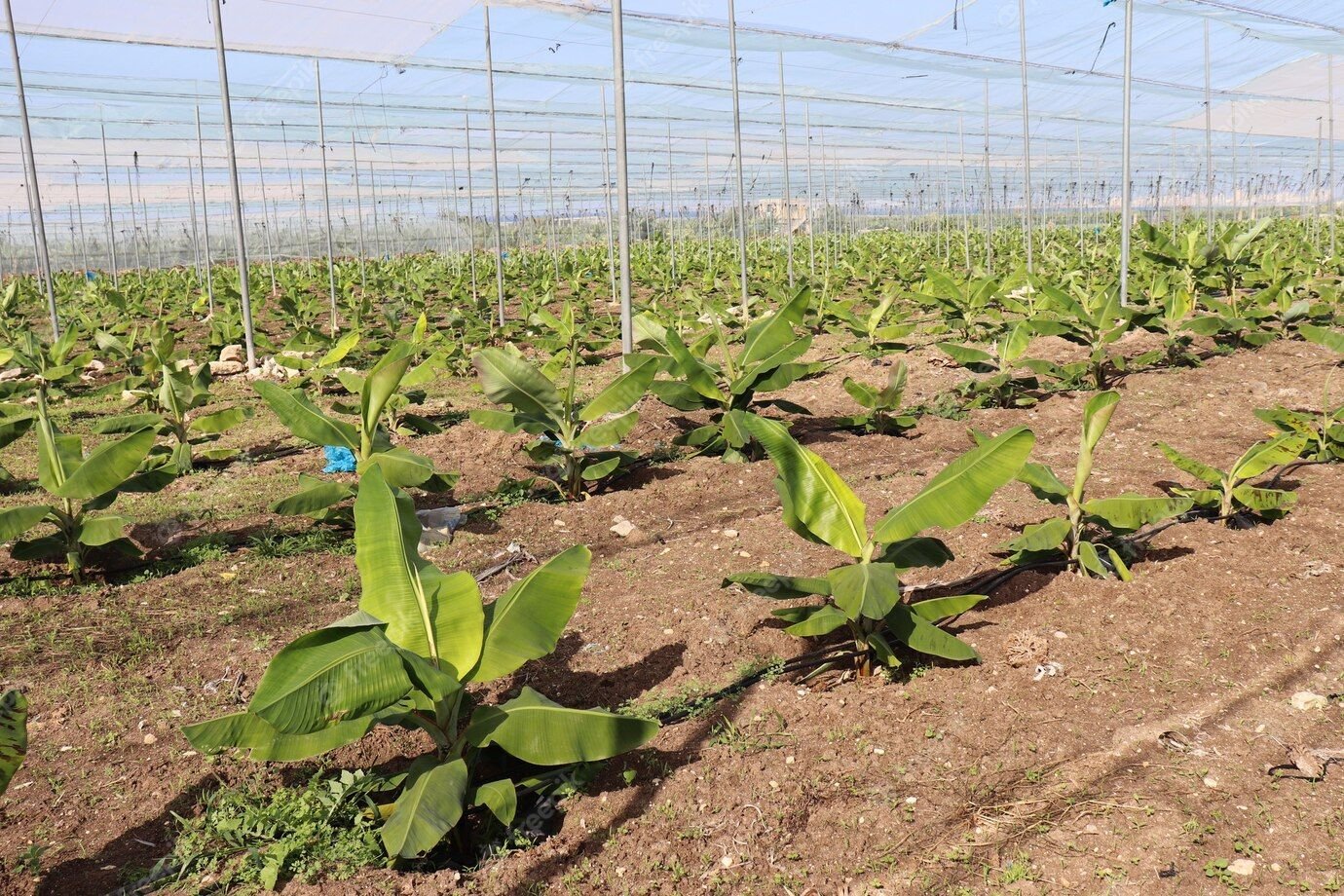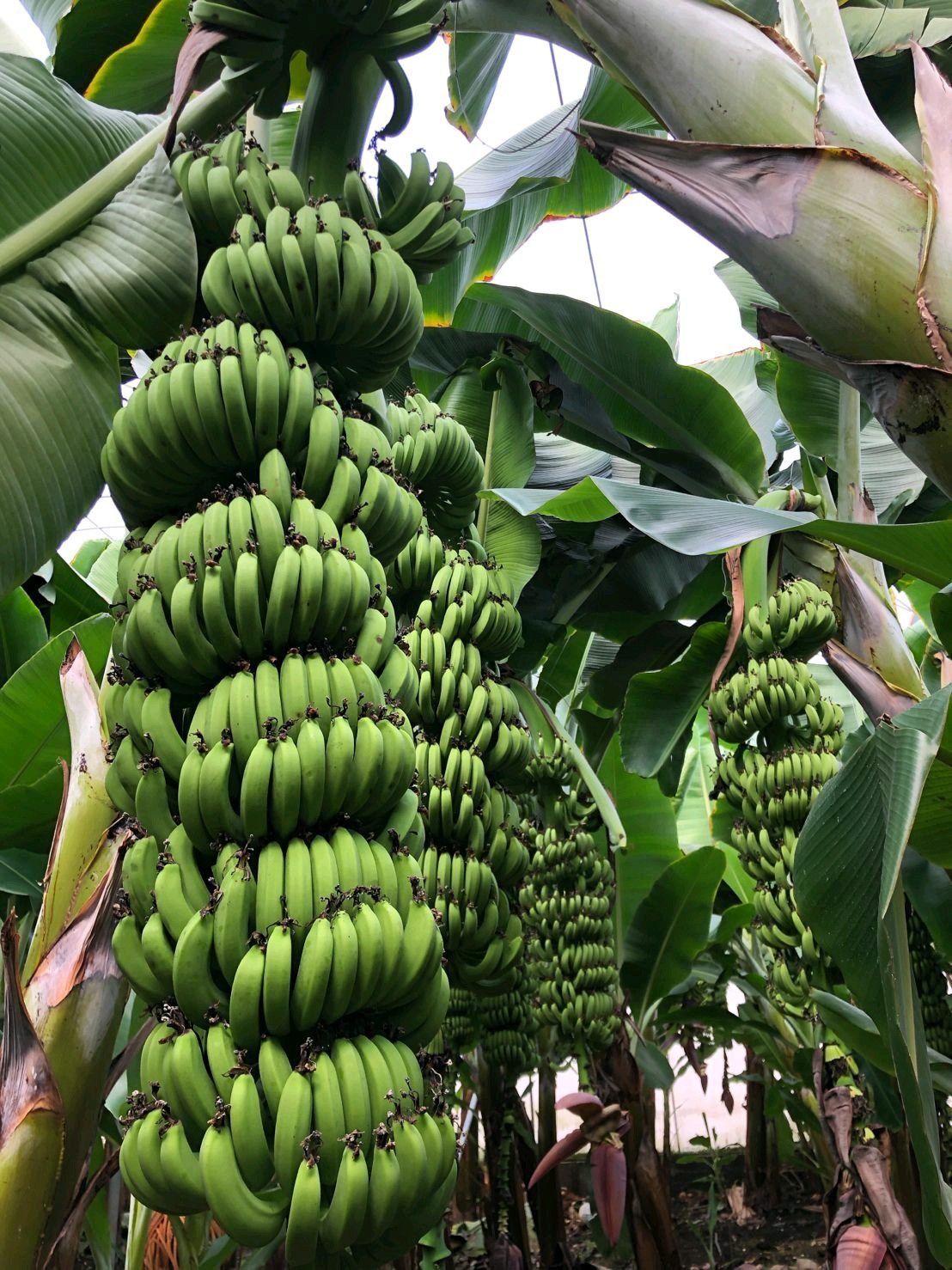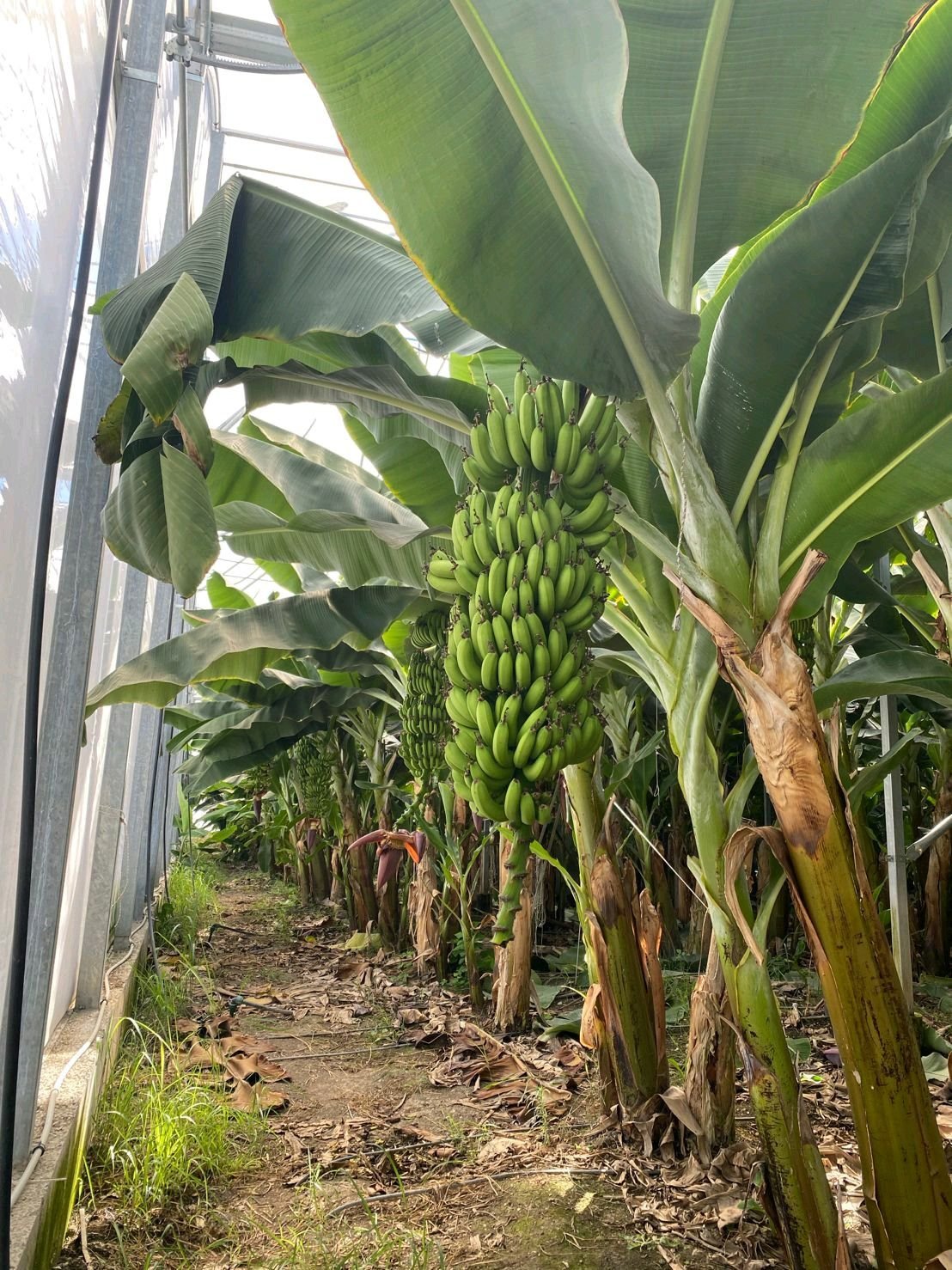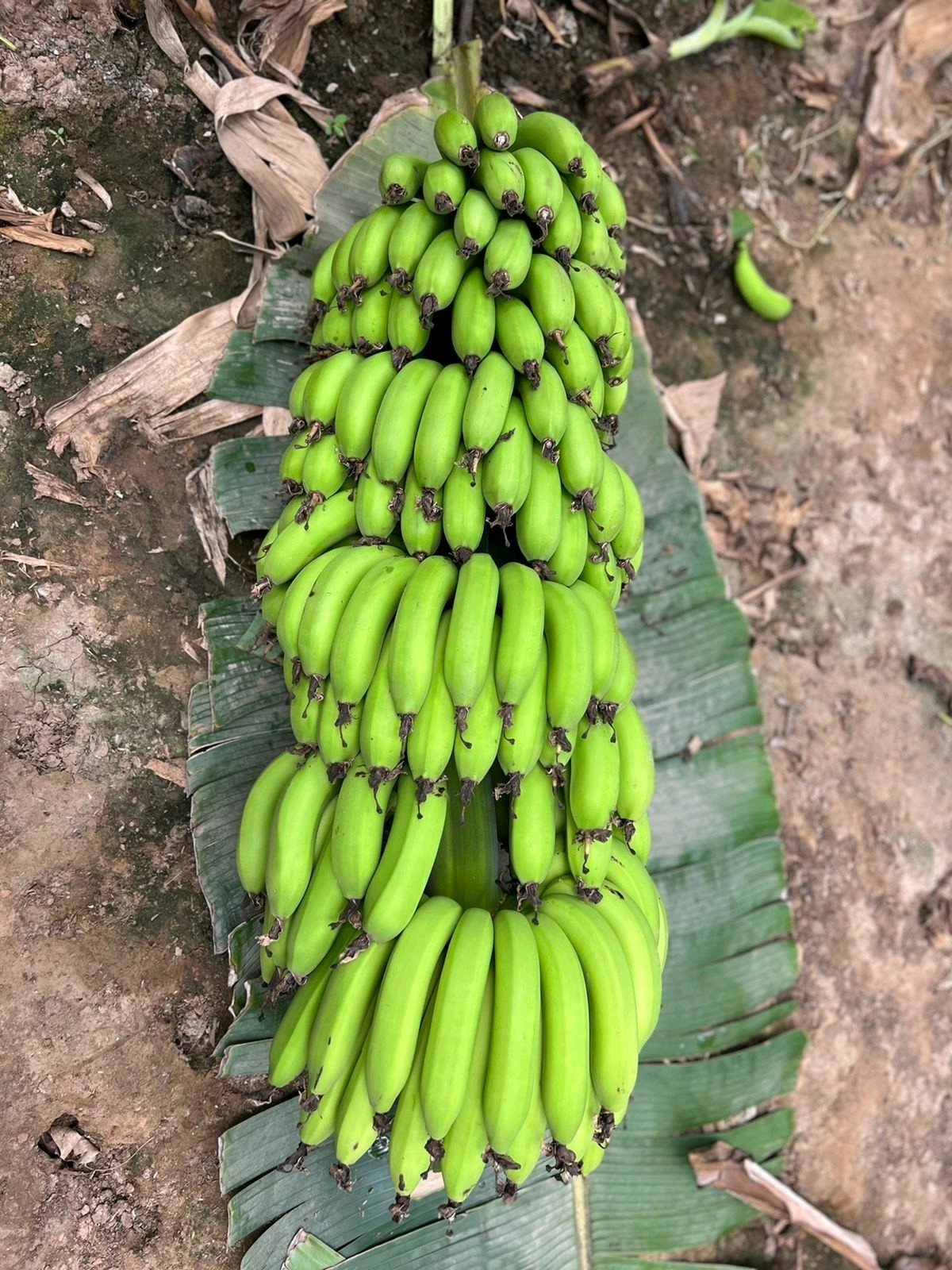Banana cultivation, an important part of agricultural farming practices for centuries. This nutritious and delicious fruit holds immense value in international markets, making it a profitable (lucrative) crop for farmers. However, traditional and conventional banana farming practice have often faced many challenges, especially in desert prone regions, due to various environmental and climatic factors, such as extreme weather conditions and pests’ infestation which led to reduction in banana production. In recent years, an innovative solution has emerged to address these issues and optimize banana cultivation – Flat Roof Shade Net House Technology, modified fruit orchard structure.
Understanding Banana Cultivation: A Brief Overview
Let’s first understand the basic requirements for successful cultivation of banana, before probing into the nuances of this breakthrough shade net house technology. The basic requirement for banana cultivation is suitable climate, good fertility of soil, and proper irrigation, these are the key factors for maximum yield and healthy growth. When it comes to banana cultivation, the process is not just confined to watering and planting. Farmers and the growers must also take into consideration factors such as pest control management, disease control management, and post-harvest management to maintain a successful crop. Proper attention and care to detail are crucial throughout the entire cultivation cycle.
The Importance of Climate in Banana Cultivation
Bananas can sustain in warm tropical climatic conditions, with an optimal temperature range of 26 to 30 degrees C (78 to 86 degrees F). They require adequate amount of sunlight and rainfall, evenly distributed throughout the producing season, usually around 2500 to 3000 mm per year. Humidity levels also play a vital role in banana cultivation, in addition to temperature and rainfall. High humidity can create a conducive environment for diseases such as Panama disease and Sigatoka leaf spot, which can damage banana plantations if not managed properly.
Challenges in Traditional Banana Farming
Banana cultivation methods often face challenges that are dominant due to insect infestations, diseases and volatile weather patterns in traditional and conventional. These components can lead to reduction in crop yield and financial losses for farmers. In recent trends, farmers are substantially turning to farm practices that are sustainable such as incorporated pest control management, organic techniques for fertilization, and crop rotation, to fight these challenges. Farmers can reduce the reliance on chemical usage, improve soil health, and maximize the overall endurance of their banana crops, by implementing these sustainable farm practice.
The Advent of Flat Roof Shade Net House Technology
Flat Roof Shade Net House Technology has introduced such controlled environment agricultural technique that has revolutionized banana cultivation by providing a shield that protects the plants from adverse weather conditions and harmful pests’ infestation. The benefits of Flat Roof Shade Net House Technology is not just limited to banana cultivation but also for other crops like tomatoes, cucumbers, and peppers. Application of this technology offers farmers the flexibility to control the growing conditions, leading to higher yields and better-quality produce.
What is Flat Roof Shade Net House Technology?
Constructing structures with a flat roof and covering them with a specialized shade net material is referred to as Flat Roof Shade Net House Technology which involves material that allows a specific and suitable percentage of sunlight exposure and penetration, creating an ideal environment for the banana plants. These structures are basically made up of robust and durable materials like galvanized steel or aluminum to combat harsh weather conditions. The shade net material comes in different shading percentages to cater to the specific sun-intensity requirement of different crops and regions.
The Science Behind the Innovation
The shade net material used in Flat Roof Shade Net House Technology is designed to regulate temperature, humidity, and light intensity. It acts as a physical barrier against pests and diseases, reducing the need for chemical pesticides. Additionally, the shade net minimizes water evaporation, ensuring efficient water usage. Furthermore, the controlled environment created by Flat Roof Shade Net House Technology promotes faster plant growth and development. The technology allows for the customization of growing conditions, enabling farmers to extend the growing season and optimize production throughout the year.
The Impact of Flat Roof Shade Net House Technology on Banana Cultivation
The implementation of Flat Roof Shade Net House Technology has had a profound impact on banana cultivation, enhancing both crop yield and plant health. Flat Roof Shade Net House Technology is a revolutionary approach in agriculture that has transformed banana cultivation practices. By incorporating shade nets over the plantation area, farmers are able to create a microclimate that is conducive to the optimal growth of banana plants. This innovative technology not only shields the plants from harsh weather conditions but also provides a controlled environment that promotes healthy and vigorous growth.
- Enhancing Crop Yield with Shade Net Technology: The shade net creates an ideal environment by protecting the plants from extreme heat, heavy rainfall, and strong winds. This leads to higher photosynthetic efficiency, resulting in increased fruit production and improved quality. Moreover, the shade netting helps in regulating the temperature around the banana plants, preventing heat stress during scorching summers and maintaining warmth during colder months. This temperature moderation plays a crucial role in optimizing the physiological processes of the plants, ultimately leading to enhanced growth and higher yields of premium quality bananas.
- Improving Plant Health and Resistance: The controlled environment provided by Flat Roof Shade Net House Technology reduces the risk of fungal infections, viruses, and pest attacks. As a result, the plants remain healthier, requiring fewer chemical interventions and ensuring their long-term viability. Additionally, the shade netting acts as a physical barrier against common banana pests like aphids, thrips, and mites, reducing the need for chemical pesticides that can have harmful effects on the environment and human health. This natural pest control mechanism not only safeguards the plants but also promotes sustainable farming practices that prioritize ecological balance and biodiversity.
Implementing Flat Roof Shade Net House Technology in Banana Cultivation
The transition to Flat Roof Shade Net House Technology requires careful planning and systematic implementation to achieve optimal results. This innovative approach offers numerous benefits to banana cultivation, including protection from harsh weather conditions, pests, and excessive sunlight, leading to improved yield and quality of the produce. Integrating Flat Roof Shade Net House Technology into banana cultivation involves a series of strategic steps that farmers need to follow diligently. From selecting the appropriate shade net material to designing the structure that suits the specific needs of the banana plants, each decision plays a crucial role in the success of this modern agricultural practice.

Steps to Transition to Shade Net Technology
Firstly, farmers must assess their specific requirements and seek expert guidance to determine the most suitable shade net material and structure design. The existing land and infrastructure need to be evaluated for necessary modifications. Once the necessary preparations are made, the construction of shade net houses can commence. Regular monitoring and maintenance are crucial to ensure the long-term effectiveness of this technology.
Moreover, before implementing Flat Roof Shade Net House Technology, farmers should conduct a thorough analysis of the local climate conditions, soil quality, and water availability to tailor the shade net houses accordingly. Understanding the micro-environment within these structures is key to maximizing the growth potential of banana plants and achieving sustainable agricultural practices.
Maintenance and Care for Shade Net Houses
Regular cleaning of the shade net material, periodic repair and replacement of damaged parts, and timely irrigation and fertilization are essential for maintaining optimal conditions within the shade net houses. Additionally, monitoring the soil moisture, temperature, and pest activity is vital for early detection and prompt action. By implementing a comprehensive maintenance plan, farmers can ensure the longevity and efficiency of their Flat Roof Shade Net House Technology, safeguarding their investment in modernizing banana cultivation.
The Future of Banana Cultivation with Innovative Technologies
As the agricultural sector continues to advance, the future holds exciting possibilities for further improvement in banana cultivation techniques.
- Potential Developments in Shade Net Technology: Ongoing research and development aim to enhance shade net materials and designs to provide an even more precise control over the microclimate. Advanced technologies such as automated irrigation systems and integrated pest management solutions are being explored to optimize resource usage and minimize environmental impact.
- Other Technological Innovations in Banana Cultivation: Aside from shade net technology, other innovative approaches are being utilized to improve banana cultivation. These include efficient fertigation systems, genetic modification for disease resistance, and eco-friendly pest control methods. Collectively, these advancements will continue to maximize crop yields and create a sustainable future for banana farmers.
- One area of focus in banana cultivation is the development of efficient fertigation systems. Fertigation, a combination of fertilization and irrigation, allows for the precise application of nutrients directly to the plant’s root zone. This targeted approach not only ensures that the plants receive the necessary nutrients, but also minimizes nutrient loss and reduces environmental impact. Through the use of advanced fertigation systems, banana farmers can optimize the growth and development of their crops, leading to higher yields and improved quality.
- Another promising area of innovation is genetic modification for disease resistance. Bananas are susceptible to various diseases, such as Panama disease and black sigatoka, which can significantly impact crop productivity. Scientists are working on developing genetically modified banana varieties that are resistant to these diseases, offering a more sustainable solution to disease management. By incorporating disease-resistant traits into banana plants, farmers can reduce the reliance on chemical pesticides and ensure a more resilient crop.
- In addition to fertigation systems and genetic modification, eco-friendly pest control methods are also being explored. Traditional pest control methods often involve the use of chemical pesticides, which can have negative effects on the environment and human health. However, researchers are investigating alternative approaches, such as the use of biopesticides derived from natural sources. These biopesticides target specific pests while minimizing harm to beneficial insects and the ecosystem as a whole. By adopting these eco-friendly pest control methods, banana farmers can protect their crops without compromising the environment.
Conclusion
In conclusion, the introduction of Flat Roof Shade Net House Technology has revolutionized banana cultivation, addressing the challenges faced by traditional farming methods. By providing a controlled environment, this innovative technology enhances crop yield, improves plant health and resistance, and ensures the long-term viability of banana cultivation. With ongoing advancements in fertigation systems, genetic modification, and eco-friendly pest control methods, the future of banana farming looks promising and prosperous. These innovative technologies and approaches will continue to drive the industry forward, enabling banana farmers to meet the growing demand for this beloved fruit while minimizing their environmental impact.


